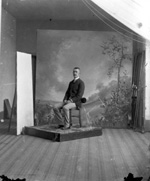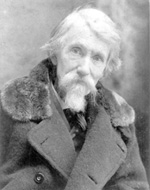Photo Exhibits
Photo exhibits spotlight various topics in Florida history, and are accompanied by brief text intended to place selected materials in historical context.
Portraits of African Americans
From the Alvan S. Harper Collection (1884-1910)

Alvan Harper's studio
Alvan S. Harper was born in Norristown, Pennsylvania in 1847. Between 1870 and 1884, he was a professional photographer in Philadelphia. A chance meeting with Judge J.T. Bernard of Tallahassee, who was in Philadelphia as a commissioner from Florida to the 1876 Centennial Exposition, may have led to Harper's move to Tallahassee in 1884. Harper was soon advertising that he would take "artistic photographs" in his first studio, a room in the house he was renting. He moved twice before buying a house and building his own studio where he worked between 1889 and his death in 1911.
Some of Harper's best negatives were lost when his studio was torn down in the 1920s. The negatives had been given to a Tallahassee historian who, because they were dirty, left them on a porch where they were mistaken for trash and taken to the dump. About 2,000 more Harper negatives were found in 1946 in the attic of the house he had owned. A Tallahassee photographer printed 250 negatives and circulated the prints in the community for identification. The negatives were turned over to the State Library and transferred to the Florida Photographic Collection after it was founded in 1952.

Self-portrait of photographer Alvan S. Harper: Tallahassee, Florida
The Alvan S. Harper collection consists of the surviving glass negatives of noted portrait photographer Alvan S. Harper. The collection includes about 200 portraits of Philadelphia people, some identified; about 100 views of Tallahassee buildings and street scenes, along with a few from Monticello, Quincy, St. Marks, and Panacea; and about 1,300 portraits of groups and individual men, women, and children, mostly unidentified. Included in those are the portraits of middle class African Americans that were used for this exhibit.

 Listen: The Folk Program
Listen: The Folk Program